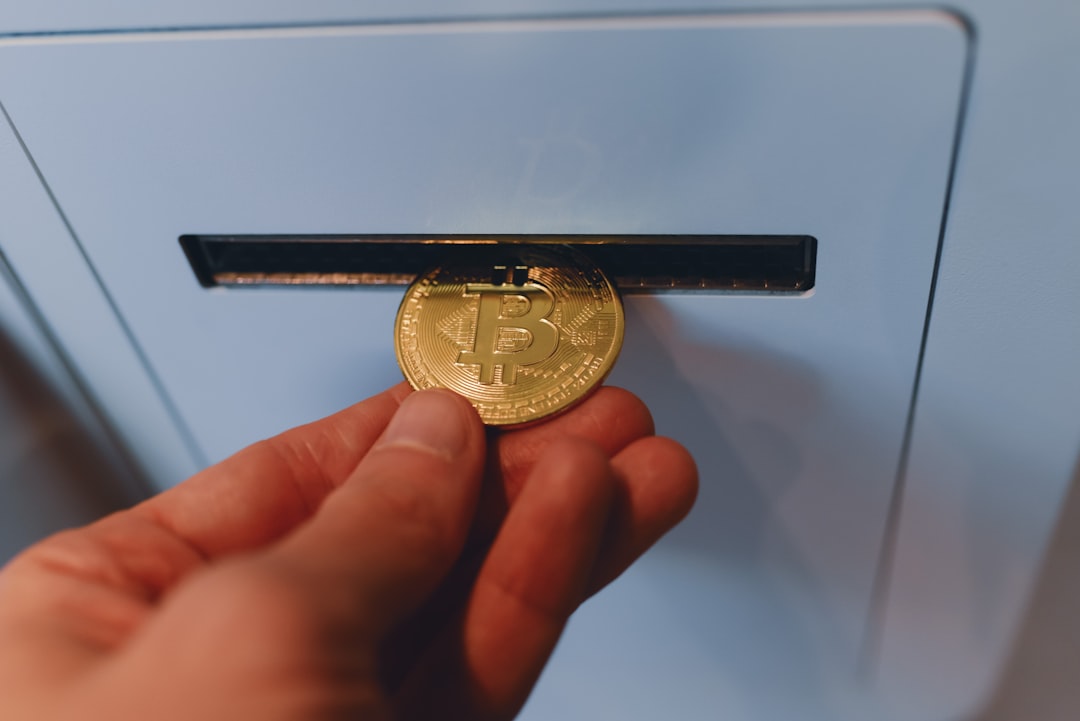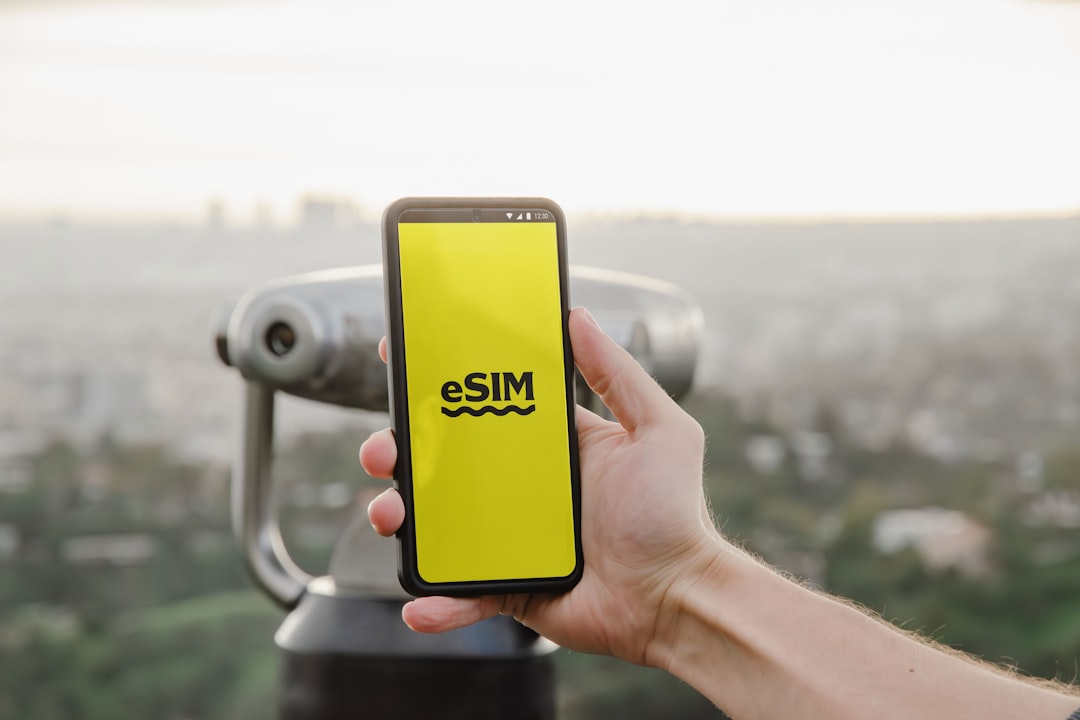Smart Crypto Wallets for the Mobile Entrepreneur

Introduction
For the mobile entrepreneur, money is never static. Projects launch in one country, clients pay in another, and expenses can pop up at any time. Traditional banking often lags behind this pace, especially when it comes to fast, low‑cost cross‑border payments. Cryptocurrency offers a solution, but only if the entrepreneur can store, spend, and manage digital assets securely while on the move. That is where smart crypto wallets enter the picture. A smart wallet blends the convenience of a mobile app with advanced features such as built‑in exchange, automated tax tracking, and integration with invoicing platforms. In this guide we explore how these wallets work, which ones are best suited for a nomadic lifestyle, and how to use them without compromising security or compliance.
Why Crypto Matters to the Mobile Entrepreneur
- Instant global payments – Sending Bitcoin, Ethereum or stablecoins to a client in another continent takes minutes, not days.
- Lower fees – Traditional wire transfers can cost $30‑$50 per transaction. Many crypto networks charge a fraction of a cent for the same transfer.
- Access to new markets – Some emerging economies have limited banking infrastructure but widespread crypto adoption. Accepting crypto opens doors to customers who otherwise could not pay.
- Portfolio diversification – Holding a portion of business reserves in crypto can hedge against currency devaluation or inflation in volatile regions.
However, these benefits only materialize when the entrepreneur can move crypto assets as easily as fiat, keep track of every transaction for tax purposes, and protect the wallet from theft. A generic “cold storage” solution is great for long‑term holding but falls short for day‑to‑day operations. A smart wallet fills that gap.
What Makes a Wallet “Smart”
A smart crypto wallet does more than generate a pair of public and private keys. Its defining characteristics include:
- Multi‑currency support – Ability to hold and swap between major coins, tokens, and stablecoins without leaving the app.
- Built‑in exchange – Integration with decentralized or centralized exchanges that let the user convert assets instantly.
- Automated tax reporting – Real‑time calculation of gains, losses, and cost basis, often exporting data to CSV or directly to popular tax software.
- Invoicing and payment links – Generation of QR codes or short URLs that clients can use to pay in crypto, with optional auto‑conversion to fiat.
- Biometric security – Fingerprint or facial recognition in addition to PIN and seed‑phrase backups.
- Cross‑platform sync – Access from phone, tablet, or desktop with end‑to‑end encryption, ensuring the wallet stays usable regardless of the device at hand.
- DeFi integration – One‑click staking, lending, or liquidity provision to earn passive income on idle balances.
When evaluating a wallet, the entrepreneur should prioritize the features that align with daily workflow, while still maintaining a strong security posture.
Types of Crypto Wallets
Mobile Wallets
Designed for smartphones, these wallets are the most convenient for on‑the‑go transactions. They store the private key locally, meaning the user retains full control. Popular examples include Trust Wallet, Atomic Wallet, and Argent.
Hardware Wallets
Physical devices such as Ledger and Trezor keep private keys offline, protecting them from malware. While not as instantly accessible as a mobile app, many hardware wallets now support Bluetooth or NFC, allowing them to pair with a phone for quick approvals.
Web (Custodial) Wallets
Services like Coinbase, Binance, and Crypto.com host the private keys on behalf of the user. The trade‑off is convenience versus control; a compromised account can lead to loss of funds, but the provider often supplies insurance and customer support.
Desktop Wallets
Installed on laptops or PCs, these wallets give more control than web wallets while offering a richer interface. Electrum and Exodus fall into this category.
Hybrid Solutions
Some platforms blend mobile and hardware features, letting the user keep a seed phrase on a device while using a mobile app for everyday spending. Examples include the Ledger Live app paired with a Ledger hardware key, or the SafePal app paired with its hardware wallet.
Top Smart Wallets for the Mobile Entrepreneur
Below is a curated list of wallets that combine the smart features entrepreneurs need. Each entry includes a brief overview, standout functionalities, and potential drawbacks.
Trust Wallet
- Overview – Official wallet of Binance, free, open‑source, available on iOS and Android.
- Key Features – Supports over 160,000 tokens, built‑in DEX aggregator, staking for several PoS coins, QR‑code payment requests, and a built‑in Web3 browser for DeFi apps.
- Tax Tools – No native tax reporting, but integrates with third‑party services such as CoinTracker via API.
- Considerations – Since it is non‑custodial, the user must back up the seed phrase securely.
Argent
- Overview – Focuses on user‑friendly security, utilizes a smart‑contract based wallet on Ethereum.
- Key Features – No seed phrase for everyday use; recovery is through social guardians. Built‑in swapping via decentralized exchanges, instant fiat conversion via partner services, and a “Lock” button to freeze the wallet if the phone is lost.
- Tax Tools – Automatic transaction labeling, exportable CSV for tax software.
- Considerations – Currently limited to Ethereum and ERC‑20 tokens; not ideal for Bitcoin‑centric businesses.
Exodus
- Overview – Desktop and mobile hybrid with a polished UI.
- Key Features – Multi‑currency support (over 100 assets), one‑click exchange via ShapeShift, built‑in portfolio tracking, and a portfolio‑wide price alert system.
- Tax Tools – Direct export of transaction history; compatible with tax aggregators.
- Considerations – Private keys stored locally; no biometric login on desktop version.
Atomic Wallet
- Overview – Non‑custodial wallet with a strong emphasis on atomic swaps.
- Key Features – Supports 500+ assets, built‑in exchange, staking for 30+ coins, and a “Buy Crypto” feature through partner providers.
- Tax Tools – Integration with CoinTracking and Koinly via CSV export.
- Considerations – Some users report slower UI on older phones.
Ledger Live (paired with Ledger Nano X)
- Overview – Hardware wallet interface that also works as a mobile app.
- Key Features – Offline private keys, Bluetooth connectivity, native staking for select assets, and built‑in exchange powered by third‑party aggregators.
- Tax Tools – Export of transaction logs, easy import to tax software.
- Considerations – Requires the physical device for each transaction, which can be less convenient for quick payments.
SafePal
- Overview – Combines a hardware wallet with a companion mobile app.
- Key Features – Air‑gapped signing via QR code, built‑in swap, staking, and support for NFTs.
- Tax Tools – CSV export and API connectivity to tax platforms.
- Considerations – Still gaining market traction; community support smaller than Ledger or Trezor.
Setting Up a Smart Wallet – Step by Step
Below is a practical workflow that any mobile entrepreneur can follow, regardless of the chosen wallet. The steps are generic enough to apply to most apps but include specific actions for the most common interfaces.
1. Choose the wallet that matches your workflow
Consider the currencies you receive most often, the need for fiat conversion, and whether you prefer full control (non‑custodial) or a managed solution (custodial).
2. Download the official app
Only install from the Apple App Store or Google Play Store. Verify the developer name and read recent reviews to avoid counterfeit apps.
3. Create a new wallet
- Open the app and select “Create New Wallet”.
- Write down the seed phrase (usually 12 or 24 words) on paper. Do not store it digitally.
- Confirm the phrase as prompted.
4. Enable biometric security
Navigate to Settings → Security and activate fingerprint or facial recognition. Set a strong PIN as a backup.
5. Add the currencies you need
Most apps will display a “Add Asset” button. Search for Bitcoin (BTC), Ethereum (ETH), USDC, and any other tokens you plan to use.
6. Set up fiat on‑ramps (optional)
If you want to purchase crypto directly, link a credit/debit card or bank account through the app’s integrated partner. Verify identity if required (KYC).
7. Connect to a tax tracking service
Many wallets allow you to paste an API key from services like CoinTracker, Koinly, or Accointing. Follow the in‑app instructions to sync your transaction history automatically.
8. Generate a payment link or QR code
- Go to “Receive” → Choose the currency → Click “Generate Link”.
- Share the link or QR code with clients via email, messaging apps, or invoicing software.
9. Test a small transaction
Send a modest amount (e.g., $10 worth of USDC) from a personal wallet to the new address. Verify that the receipt appears instantly and that the tax tracker logs the transaction.
10. Backup your wallet
In addition to the seed phrase, consider storing an encrypted backup file on a secure cloud service (e.g., encrypted Google Drive) and a second physical copy in a different location.
11. Enable auto‑swap or fiat conversion (if needed)
If you prefer to receive payments in stablecoins but want to convert them to local fiat automatically, set up a rule in the wallet’s swap interface. Choose a threshold amount and the desired conversion pair.
12. Secure the device itself
- Keep the operating system updated.
- Install a reputable mobile security app.
- Enable “Find My Device” and remote wipe capabilities.
Security Best Practices for Mobile Entrepreneurs
Even the smartest wallet cannot protect against a careless user. Follow these habits to keep your crypto safe while traveling.
Keep the seed phrase offline
Never type the seed phrase into a phone or computer. Write it on paper, laminate it if possible, and store it in a waterproof pouch.
Use multi‑factor authentication (MFA)
When the wallet supports it, enable MFA for any linked services (exchange accounts, tax platforms, email).
Limit exposure of large balances
Treat the mobile wallet as a checking account – keep only the amount you need for the next few weeks. Store the bulk of your reserves on a hardware wallet or a custodial account with insurance.
Verify addresses carefully
Copy‑paste attacks are common. Use QR codes when possible, and double‑check the first and last four characters of any pasted address.
Update apps regularly
Developers release patches for security vulnerabilities. Turn on automatic updates for your wallet and operating system.
Beware of public Wi‑Fi
When accessing your wallet on public networks, use a trusted VPN. Avoid logging in to any crypto service on unsecured Wi‑Fi.
Enable “freeze” or “lock” features
Many smart wallets offer a one‑tap freeze that disables outgoing transactions until you re‑authenticate. Activate this as a safety net.
Conduct regular audits
Export your transaction history monthly and reconcile it with your accounting software. Look for any unexpected outgoing transfers.
Managing Taxes and Compliance on the Move
Cryptocurrency tax regimes vary by country, but certain principles apply globally. A mobile entrepreneur must stay organized to avoid penalties.
Record every transaction
Smart wallets that auto‑label trades, swaps, and payments make this easier. Export CSV files at least once a month and store them securely.
Determine cost basis
For each coin, the cost basis is typically the fiat value at the time of acquisition. Some wallets calculate this automatically, but double‑check especially when using decentralized exchanges.
Separate personal and business transactions
Open a dedicated crypto address for business income. This simplifies bookkeeping and helps prove the nature of each transaction to tax authorities.
Track stablecoin inflows and outflows
Even though stablecoins are pegged to fiat, converting them to another crypto triggers a taxable event in many jurisdictions.
Use tax‑friendly jurisdictions
If you spend most of your time in countries with favorable crypto tax laws (e.g., Portugal, Malta), consider establishing a legal entity there. Consult a local tax professional.
File reports on time
Many countries now require a “crypto disclosure” section on the annual tax return. Use the data exported from your wallet to fill the required forms.
Keep documentation of KYC/AML checks
If you use a custodial service to accept client payments, retain the verification documents. They may be needed to prove the legitimacy of funds.
Integrating Smart Wallets with Business Tools
The true power of a smart wallet lies in its ability to talk to other apps you already use for invoicing, project management, and accounting.
Invoicing platforms
- Stripe and PayPal now support crypto payments through third‑party gateways. Link your wallet’s payment address to the gateway to receive funds directly.
- FreshBooks and QuickBooks allow custom payment methods. Add the wallet’s QR code as a “Crypto” option on each invoice.
Accounting software
- Import CSV exports from the wallet into Xero, Zoho Books, or Wave. Map columns to “Income”, “Expense”, and “Asset” categories.
- Use integrations offered by tax services (e.g., Koinly’s API) to sync data automatically.
Project management
- Connect your wallet to Zapier or Integromat (Make) to trigger actions when a payment is received. Example: When a client sends USDC, automatically move the funds to a “Project X” folder and send a Slack notification.
Customer relationship management (CRM)
- Store each client’s crypto address in your CRM (e.g., HubSpot). When a payment is logged, update the client’s “Last Payment Date” field automatically.
Email signatures
- Add a short crypto payment link or QR code to your email signature. This makes it easy for clients to pay without navigating away from their inbox.
Tips for Cross‑Border Transactions
Mobile entrepreneurs often need to move money across multiple jurisdictions. Smart wallets can simplify this process, but there are nuances to consider.
Choose the right stablecoin
USDC, USDT, and DAI are widely accepted, but not all are equally liquid in every region. Check local exchange listings before deciding which stablecoin to use for payments.
Mind the network fees
Ethereum can become expensive during congestion. Consider layer‑2 solutions like Polygon, Arbitrum, or Optimism for cheaper transfers. Many smart wallets allow you to select the network when sending.
Use “batch” payments
If you need to pay several freelancers in the same currency, batch the transactions into a single on‑chain transaction where possible. This reduces total gas fees.
Check regulatory limits
Some countries impose caps on the amount of crypto that can be transferred without additional reporting. Keep records to demonstrate compliance if you exceed thresholds.
Leverage native token discounts
Many DEX aggregators offer fee rebates when you pay gas with the network’s native token (e.g., using MATIC on Polygon). Enable this feature in the wallet settings to lower costs.
Common Pitfalls and How to Avoid Them
| Pitfall | Why it Happens | Prevention |
|---|---|---|
| Losing the seed phrase | Storing it on a phone or cloud service | Write on paper, keep in a fire‑proof container, duplicate in a separate safe location |
| Using a single device for all crypto activity | Convenience | Keep a hardware wallet for large reserves; use mobile wallet only for daily spend |
| Ignoring tax obligations | Belief that crypto is “off the radar” | Set up automated tax tracking, schedule monthly reconciliations |
| Paying with a high‑fee network | Not checking gas price before sending | Use fee estimators, switch to layer‑2 or cheaper networks when possible |
| Falling for phishing scams | Clicking malicious links that mimic wallet interfaces | Verify URLs, enable biometric login, never share private keys |
| Over‑reliance on custodial services | Assuming the provider will always be there | Keep a backup of private keys, diversify storage methods |
| Not updating the app | Missing security patches | Turn on automatic updates, check changelog for critical fixes |
Future Trends in Smart Wallets
The crypto wallet landscape is evolving rapidly. Keep an eye on these emerging developments that could benefit mobile entrepreneurs.
Decentralized Identity (DID)
Wallets are beginning to incorporate self‑sovereign identity standards. This could replace traditional KYC forms, allowing you to prove business legitimacy without handing over personal documents.
AI‑driven expense categorization
Machine‑learning algorithms will analyze transaction metadata to auto‑categorize expenses (travel, marketing, payroll) and suggest optimal tax treatments.
Integrated fiat gateways
Future wallets may embed on‑ramp and off‑ramp services directly, eliminating the need for third‑party exchanges. A single tap could convert crypto to local cash at the prevailing market rate.
Cross‑chain interoperability
Protocols like THORChain and Wormhole enable seamless swaps between Bitcoin, Ethereum, Solana, and other ecosystems without leaving the wallet. This reduces friction for clients who prefer different blockchains.
Regulatory compliance layers
As governments develop clearer crypto tax rules, wallets will embed real‑time compliance checks, warning users before they make a transaction that could trigger reporting requirements.
Practical Checklist for the Mobile Entrepreneur
- [ ] Choose a smart wallet that supports your primary currencies and fiat conversion needs.
- [ ] Write down and securely store the seed phrase in at least two physical locations.
- [ ] Enable biometric login, PIN, and device‑level encryption.
- [ ] Link the wallet to a reputable tax tracking service and set up automatic imports.
- [ ] Create a dedicated business address for client payments.
- [ ] Test a small transaction and verify that the tax software logs it correctly.
- [ ] Set up payment links or QR codes in your invoicing and email templates.
- [ ] Keep daily balances low; store the majority of assets on a hardware wallet.
- [ ] Review transaction fees and choose the most cost‑effective network for each payment.
- [ ] Perform a monthly audit: export CSV, reconcile with accounting software, and file any required tax reports.
Conclusion
Smart crypto wallets have moved beyond simple key storage. They now act as mini‑finance hubs, allowing the mobile entrepreneur to receive payments instantly, convert currencies on the fly, track taxes automatically, and integrate with the suite of tools that keep a remote business running smoothly. By selecting a wallet that matches your workflow, securing it with best‑practice habits, and staying disciplined with record‑keeping, you can harness the speed and low cost of cryptocurrency without exposing yourself to unnecessary risk. As the technology continues to mature—bringing decentralized identity, AI‑driven accounting, and deeper fiat integration—the gap between traditional banking and crypto finance will shrink even further, giving nomadic professionals a truly borderless financial ecosystem.
Random Posts

Explore the World as a Nomad Best Flights and Destination Insights
Discover the top nomad-friendly cities with fast internet, low living costs, and easy visas, plus smart flight strategies to travel smoothly between them and keep your remote work thriving
2 months ago

From Home Base To Global Roamer A Starter Guide
Ready to trade your home office for sunrise over new skylines? This starter guide gives you the mindset shift, practical steps and resources to launch a sustainable global nomad life
1 month ago

Beginners Roadmap To Freedom On The Move
Follow a step-by-step roadmap that shifts your mindset, builds a lean financial base, equips you with essential gear, sets up remote work, handles legal basics, and creates healthy habits for sustainable nomadic freedom.
1 week ago

Smart Finance Tax and Legal Strategies for Nomads Plus Health and Travel Insurance Plans
Discover how digital nomads can protect earnings and stay compliant with smart tax residency, corporate structures, and the right health and travel insurance, so you can roam worry-free.
1 month ago

Cryptocurrency Basics Tailored for Traveling Professionals
Discover how crypto keeps your money as mobile as your career: instant cross-border transfers, secure wallets, simple cash-out, and essential tax tips so you can work anywhere without banking limits.
3 weeks ago
Latest Posts

Essential Software Every Remote Professional Should Use
Master remote work with essential tools: instant messaging like Slack, high definition video calls such as Zoom, and asynchronous voice apps. Streamline communication, stay connected and boost productivity.
1 day ago

Mastering Remote Work Productivity for Digital Nomads and Freelancers
Learn proven habits, tools, and tactics that help digital nomads and freelancers stay focused, deliver quality work, and maintain a sustainable lifestyle while traveling the world.
1 day ago

Tech‑Friendly European Towns Perfect for Remote Living
Discover Europe’s best small towns where fast internet, affordable living and vibrant tech communities let you work remotely while soaking up historic charm, lakeside views or mountain air.
1 day ago